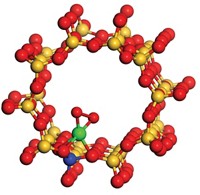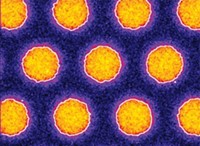Advertisement
Grab your lab coat. Let's get started
Welcome!
Welcome!
Create an account below to get 6 C&EN articles per month, receive newsletters and more - all free.
It seems this is your first time logging in online. Please enter the following information to continue.
As an ACS member you automatically get access to this site. All we need is few more details to create your reading experience.
Not you? Sign in with a different account.
Not you? Sign in with a different account.
ERROR 1
ERROR 1
ERROR 2
ERROR 2
ERROR 2
ERROR 2
ERROR 2
Password and Confirm password must match.
If you have an ACS member number, please enter it here so we can link this account to your membership. (optional)
ERROR 2
ACS values your privacy. By submitting your information, you are gaining access to C&EN and subscribing to our weekly newsletter. We use the information you provide to make your reading experience better, and we will never sell your data to third party members.
Catalysis
Study distinguishes structure and function of catalytically active sites on copper that reduce CO₂
Finding may boost efforts to selectively convert greenhouse gas to valuable products
by Mitch Jacoby
January 21, 2021
| A version of this story appeared in
Volume 99, Issue 3
In the ongoing drive to remove greenhouse gases from the environment and put them to good use, researchers have known for years that copper catalysts in electrochemical cells can convert carbon dioxide to ethylene, alcohols, and other valuable compounds. What they don’t know are the atomic-level details than enable low-cost copper to do this carbon-coupling chemistry. These details could help design catalysts that provide higher yields of desired products.
By combining experiments, high-throughput computational screening, and quantum calculations, a team led by Jinlong Gong of Tianjin University has worked out the atomic structure of three types of active sites on a well-studied copper catalyst and distinguished sites that produce ethylene from ones the generate alcohols (Nat. Commun. 2021, DOI: 10.1038/s41467-020-20615-0).
These catalysts typically produce a range of products containing two or more carbons, explains Cao Thang Dinh of Queen’s University, who was not involved in the study. But better understanding of the active sites, he says, could help make a single product. These results provide the type of guidance needed for designing highly selective catalysts for CO2 reduction, Dinh says.
The team analyzed binding energies and other properties of reaction intermediates at more than 150 types of catalyst surface sites. The results show that certain arrangements of copper atoms with square-like geometries drive the coupling reactions.
Probing further, they found that two distinct square arrangements catalyze production of ethylene. They also identified a third type of site that produces alcohols by hindering the ethylene pathway and stabilizing CH3CHO intermediates that go on to form alcohols.
These results “will inspire the imagination of experimentalists,” says Kazunari Domen of the University of Tokyo. But it will be challenging to make catalysts with the desired activity and selectivity at an industrial scale, he says.




Join the conversation
Contact the reporter
Submit a Letter to the Editor for publication
Engage with us on Twitter